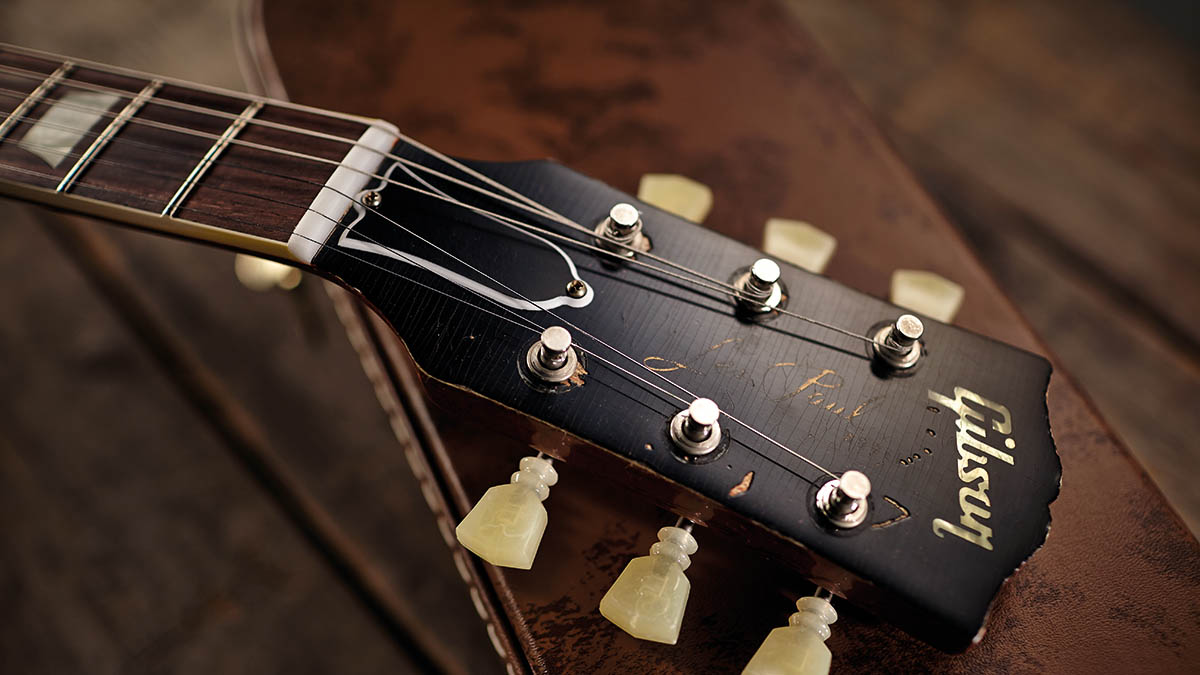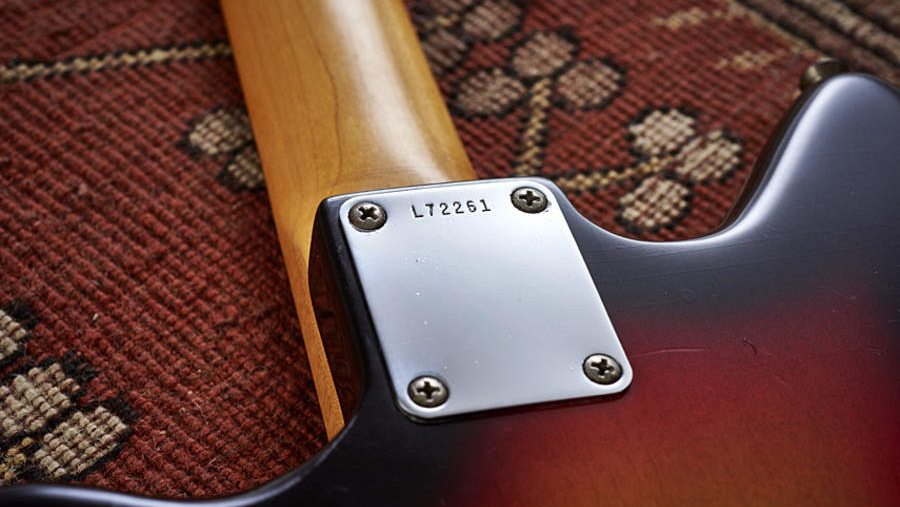“The owner refused to believe me and called me a liar. Then I realized the craziest thing...” This luthier was offered the chance to buy a ’90s Les Paul, but something didn’t feel right – it turns out he had the ultimate proof to hand
The guitar was brought into George Parfitt’s guitar shop, but a deep dive into the instrument’s history led him to a baffling discovery – and a powerful illustration in not trusting serial numbers

A British luthier has had “the craziest” experience after a customer dropped off their ‘90s Gibson Les Paul with him for repairs – only to find he’d already played a role in the guitar’s intriguing journey.
Located in the Welsh town of Pembroke, Main Street Music has been run by luthier George Parfitt, who also operates as Dockyard Guitars, since 2022. For the last three years, he’s handled repair jobs for many customers.
However, the unlikeliest of overlaps has now left him with quite the story to tell – not to mention a neat illustration of the fact that not all guitars are what they appear to be.
Posting about the tale on Instagram, Parfitt begins by explaining a ‘90s Les Paul was brought in and offered for sale.
“The serial number checked out,” he says, “but a few small details just didn't feel right to me. The owner claimed he’d had it from new and it had no previous repairs. So I posted a picture on my story, and straight away someone said 'Hey that looks my guitar from the '90s. And if that is, I snapped the neck at a gig.’”
The emergence of someone claiming to be the guitar’s original owner added a fresh twist, and it was about to get a whole lot weirder. The revelation sent Parfitt down a rabbit hole.
“I did a bit more digging, and I found the guy that fixed the neck,” he reveals. “It turns out he made an entirely different new neck for it and copied the serial number from the original neck.”
All the latest guitar news, interviews, lessons, reviews, deals and more, direct to your inbox!
A post shared by Main Street Music (@mainstreetmusicpembroke)
A photo posted by on
Serial numbers are unique to each product, be they an electric guitar or an amplifier, and are used to verify their production dates, track batches of gear in case of recalls and to help authenticate products.
They’ve also proven particularly useful when guitars with esteemed pasts head to auction, or, as was the case for a 1954 Strat, when it comes to investigating their often oddball histories. However, they are by no means infallible markers of authenticity.
When the new information came to light, Parfitt passed on word to the potential seller.
“The owner refused to believe me and called me a liar as I had no proof,” he says.

The video also shows a screenshot of their exchanges, with Parfitt's customer questioning “What is the 100% proof?”
“If, as you opined, the instrument has a new neck then it is no longer legitimate to hold its Gibson serial number,” they continued. “I would suggest you are wrong and should know that.”
Granted, the guitar being adorned with its original serial number – one that Gibson's database corroborated – makes it easy to understand why the customer was so defensive. But as we noted, serial numbers are not tamper proof.
Fortunately, it turned out Parfitt had the evidence to hand.
“Then I realised the craziest thing,” explains the luthier. “I have the original neck on another customer repair in the workshop with the same, matching, serial number. Small town, eh?”
As Parfitt details in the comments, it turns out the original owner had broken it twice and wanted a new neck made. The luthier in question did the job but held on to the Gibson original – later repairing it and adding it to another build.
Parfitt shows them both in the video, side-by-side, the customer's sunburst Les Paul sitting beside a gorgeous P-90 pickup-loaded model with a natural finish.
“There is no argument here,” Parfitt later told his angry customer. “I literally have the original neck in my workshop right now.”

The fact the mystery nearly remained undiscovered is a credit to the luthier who built the neck.
“Honestly the guy did an amazing job,” reflects Parfitt. “He used a nice piece of mahogany, Madagascan rosewood, and jescar frets. He got the specs spot on.”
The serial number was imprinted a touch too deep that it made me question it
George Parfitt
Parfitt’s instincts and eagle-eye for detail ultimately paid-off here, though.
“The serial number was imprinted a touch too deep that it made me question it, and the truss bolt was silver not brass,” he says. “The heel joint showed up under black light too. Probably played better than the original thing, but it sadly devalues the instrument in this funny market.”
For other curious, serial number-related tales, see David Gilmour's former ‘54 Strat that bore the serial number 0001. Despite its mystique, Fender CEO Andy Mooney says he was left disappointed after playing it before it went to auction.
A freelance writer with a penchant for music that gets weird, Phil is a regular contributor to Prog, Guitar World, and Total Guitar magazines and is especially keen on shining a light on unknown artists. Outside of the journalism realm, you can find him writing angular riffs in progressive metal band, Prognosis, in which he slings an 8-string Strandberg Boden Original, churning that low string through a variety of tunings. He's also a published author and is currently penning his debut novel which chucks fantasy, mythology and humanity into a great big melting pot.
You must confirm your public display name before commenting
Please logout and then login again, you will then be prompted to enter your display name.

